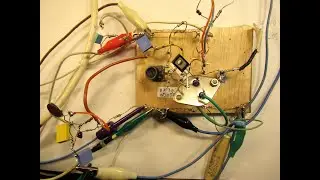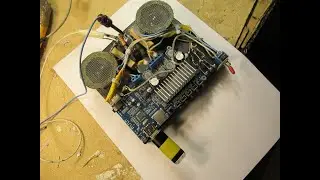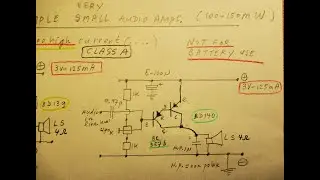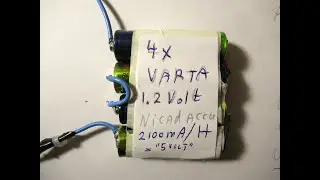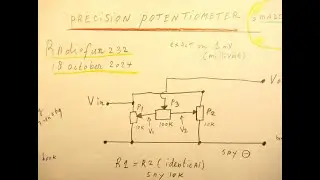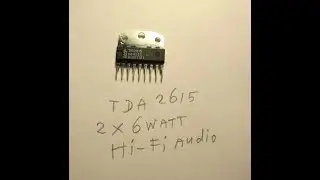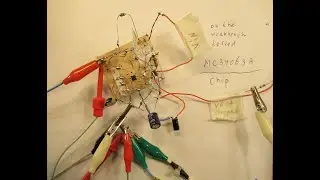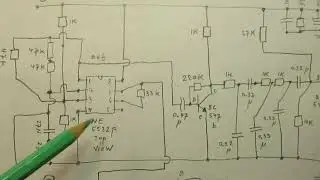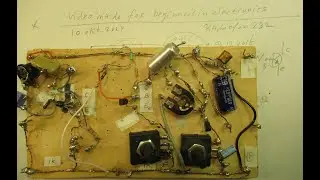Browsing a French electronics magazine of 1964 with 11 (!) different Astabile Muvib. schematics
Please read the description/textbox first. When browsing through a French electronics Magazine of 1964 we find all kinds of advertisements and VHF tuners. Also (11) (eleven!) different A stabile Multivibrators made with 2 (sometimes 3) transistors.
READ the textbox (...) to get an idea which resistor values have to be used (collector & base resistors) to make these circuits work and (thus) oscillate to generate squarewaves (!).
Here I discuss these schematics and their properties, in general generating square waves (with sharp and less sharp edges…) with a variable duty cycle and variable frequency with the help of 2 potentiometers.
Say between 20 Hz and 100 KC (perhaps higher).
Sorry that I could not expand (fold out) the computer screen to a more ideal video view. I did not want to do the video all over because everything that I wanted to tell was told in these 15 minutes.
Source: the French electronics magazine “Radio Constructeur et dépanneur”, April 1964, the author of the article of A stabile Multivibrators is/was H. Schreiber.
Where, in these schematics from the 1964 magazine, the component values are not showed use these rules of thumb to get the circuit working and get success (nb: don’t be afraid, the A stabile Muvib almost always works directly):
1. Use the BC 547 B (NPN) orb the BC 557 B (PNP). Their amplification factor is approx. 300 and they work stable. Theoretical every Si or Ge transistor with a Hfe (Bèta) of 70 or more can work, but……..Sometimes their Hfe/Bèta is too low especially on higher frequencies in the “audio” range (20 Hz-20 KC-40 KC-100KC). Because the Hfe of a BC 547/BC 557 is 300 the success ratio goes up to 95 %.
2. With a NPN transistor: the (+) goes to the collector, with a PNP transistor the (-) goes to the collector.
3. When component values in this 1964 publication are not showed these rules of thumb apply: the resistor in the collector lead must (can) have a resistance between 470 Ohm and 2K2. For the resistor in the base lead the value is between 10 K and 100 K. Due to the high Hfe (Bèta) of the BC 547 you can even go to 220 K. Due to the fact that Germanium transistors oscillate easier, you will find in these A-stabile Muvib. schematics (schematics in this 1964 magazine and elsewhere where Germanium transistors are/were used) sometimes even 500 K for a base resistor.
Please note: Germanium transistors with a too low Bèta (say 20 or so) cannot work here and/or it will be very cumbersome, even with their property of easy “natural” oscillation.
4. In general the emitters of the transistors go directly to ground (minus or positive). Sometimes you find a resistor in the order of 20 Ohm - 470 Ohm in the emitter lead.
5. Start with capacitors of 100 N. Experiment (if necessary) with the base resistor values till it oscillates. With 100 N you are in general in the 500 Hertz-1500 Hertz range.
6. When it oscillates: replace 100 N capacitor with a cap of 10 N (=0,01 Uf). Study the frequency and the waveforms. If possible: go to 4N7 (=0,0047 uF). Etc. With 10 N you are in the 3 KC-8 KC range. With 4N7 you are in the 8KC-19 KC range.
My You Tube channel trailer is here: • Radiofun232 on YouTube (updated monthly) When you search, search always “NEWEST FIRST” to get the right overview. You can also search via the “looking glass” on my Channel trailer via keywords like ”audio”, “radio”, “amplifier”, “filter”, “Shortwave”, “transistor”, “FET”, “oscillator”, “generator”, “switch”, “schmitt trigger” etc; so the electronic subject you are interested in.
My books about electronics & analog radio technology are available via the website of "LULU”, search for author “Ko Tilman” there.
https://www.lulu.com/search?adult_aud...
I keep all my YT videos constant actual, so the original video’s with the most recent information are always on YouTube. Search there, and avoid my circuits that are republished, re-arranged, re-edited on other websites, giving not probable re-wiring, etc.
Some persons try to find gold via my circuits. I take distance from all these fake claims. I cannot help that these things happen. Upload 26 August 2022.
![[Raw, Boring] Four Random Landings](https://images.mixrolikus.cc/video/wacFCUJeWzc)







